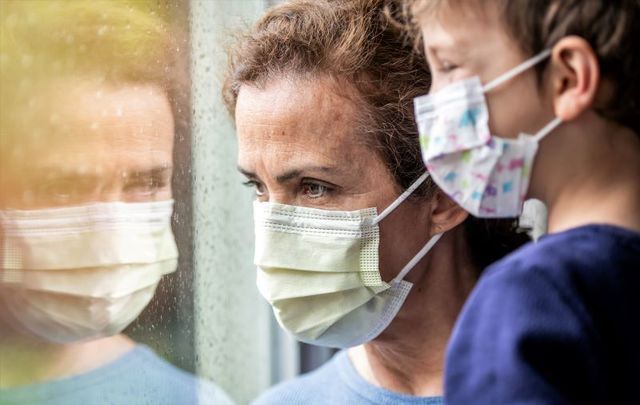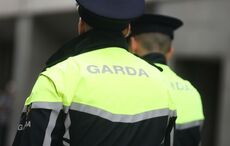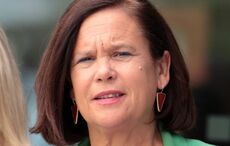Dr. Daniel Murphy, based at St. Barnabas Hospital in the Bronx, says "the wave has crested"
Dr. Daniel Murphy, the chairman of the Department of Emergency Medicine at St. Barnabas Hospital in the Bronx, says it’s time to end the coronavirus lockdowns.
Read More: “A true hero” - NYC ER doctor takes life after working COVID-19 frontlines
In an op-ed for The New York Post, Dr. Murphy, who says he has been in the ER every day either supervising or providing direct care, outlines why he believes it’s time to ease things back to normal. He adds that he, and two of his daughters, had contracted COVID-19, but have since recovered.
Dr. Murphy’s op-ed comes the day after the US crossed the threshold of 1 million confirmed cases of coronavirus. New York City remains a hotspot - as of Wednesday afternoon, there were more than 17,600 coronavirus-related deaths reported in NYC.
In his op-ed, Dr. Murphy writes: “COVID-19 has been the worst health care disaster of my 30-year career, because of its intensity, duration, and potential for lasting impact. The lasting impact is what worries me the most. And it’s why I now believe we should end the lockdown and rapidly get back to work.”
Dr. Murphy recounts how he and his team transitioned from addressing PPE and management of patients “with mild illness” to managing a two-week wave of “critically ill patients in numbers none of us had ever seen.”
“The number of patients on ventilators accumulated in the ER and throughout the hospital,” writes Dr. Murphy. “We witnessed an unprecedented number of deaths. The tone of the huddles became more somber. We became accustomed to the morbidity; we did our jobs.”
Citing his first-hand experience on the frontlines, Dr. Murphy explains why “it’s time to ease the lockdown."
“First, the wave has crested. At 1 p.m. April 7, the COVID-19 arrivals slowed down. It was a discrete, noticeable event. Stretchers became available by 5 p., and the number of arriving COVID-19 patients dropped below the number discharged, transferred, or deceased.
“This was striking, because the community I serve is poor. Some are homeless. Most work in ‘essential,’ low-paying jobs, where distancing isn’t easy. Nevertheless, the wave passed over us, peaked and subsided. The way this transpired tells me the ebb and flow had more to do with the natural course of the outbreak than it did with the lockdown.
Read More: IrishCentral COVID-19 Relief Fund launches, in association with The Ireland Funds America
“Second, I worry about non-coronavirus care. While the inpatient units remain busy with sick COVID-19 patients, our ER has been quiet for more than a week. We usually average 240 patients a day. For the last week, we averaged fewer than 100. That means our patients in this diverse, low-income community are afraid to come to the ER for non-COVID care.”
Dr. Murphy, citing data from the FDNY, says that the number of 911 ambulance calls across NYC shrank to 3,320 on April 18 after reaching a peak of 6,527 on March 27. “The current nadir is significantly below the average,” he writes.
He adds: “A large share of those staying home surely have emergency medical and surgical conditions not related to the novel coronavirus. The growing numbers dying at home during this crisis must include fatal myocardial infarctions, asthma exacerbations, bacterial infections, and strokes.
“Meanwhile, our pediatric volume in the ER has practically disappeared. Visits to primary-care pediatricians are also down, with vaccine schedules falling behind. Everyone seems to be avoiding the health system — an important and unfortunate consequence of the stay-at-home strategy.
“Third, inordinate fear misguides the public response. While COVID-19 is serious, fear of it is being over-amplified. The public needs to understand that the vast majority of infected people do quite well.
Read More: The United States and COVID-19 - a country in crisis
“Finally, COVID-19 is more prevalent than we think. Many New Yorkers already have the COVID-19 infection, whether they are aware of it or not. As of today, over 43 percent of those tested are positive in The Bronx. We are developing a significant degree of natural herd immunity. Distancing works, but I am skeptical that it is playing as predominant a role as many think.
“More testing will better establish the numbers among those with mild illnesses and no symptoms. My professional experience tells me the number of infected people will be high. Testing is important work, but it should happen in parallel to the immediate resuscitation of the economy and getting people back to work.
“At present, the testing is imperfect. We can’t wait months. We must protect the vulnerable and mitigate without destroying the economy.
Dr. Murphy concludes: “Standing up to this virus can’t be the job of essential workers only. We’ve been strong, but we’re tired, and we need the rest of you to help us. By getting back to work.”
Read More: Meet the group of Irish Americans in New York delivering food to frontline staff




Comments